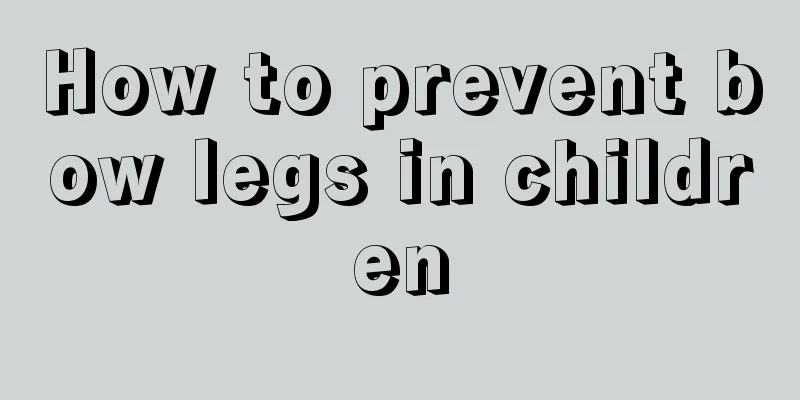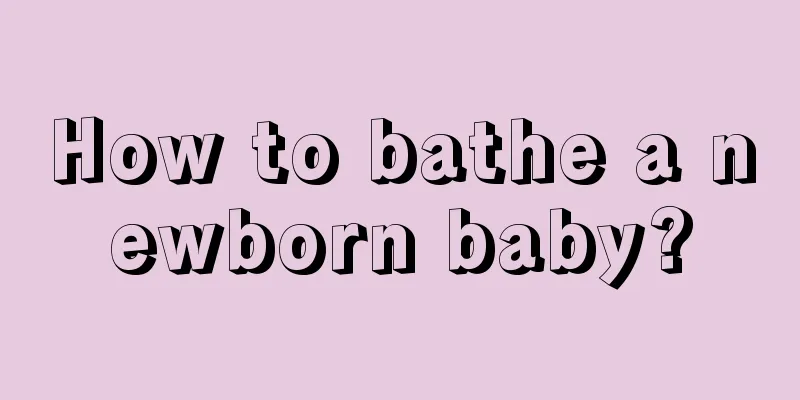How to prevent bow legs in children

|
Bow legs in young children are not good for their development and will cause certain obstacles to their walking. The difficulty in maintaining balance, learning to walk, and the development of legs are also issues that many parents worry about. Let us now learn how to prevent bow legs in children? 1. Avoid the W-shaped kneeling posture. When babies begin to learn to crawl and sit, they are prone to the W-shaped kneeling posture with their knees turned outward. The bone development of preschool babies is not yet stable, so when babies kneel, their feet are mostly turned outward. This will make the leg deformation worse, especially for children who already have obvious pigeon-toed features. At this time, it is best for parents to try their best to help the baby move his feet and help him return to a normal state, but it is better to avoid letting him kneel. Parents should avoid letting their babies sit in a W-shaped kneeling position and should correct bad sitting posture at any time. You can encourage your baby to sit cross-legged, because leg deformation causes the inner thigh muscles to be too tight. You can often use the cross-legged sitting position to stretch the tight muscles and correct the leg deformation. You can also let him sit in a small chair to reduce the impact of bad sitting posture on his leg shape. 2. Use a candle wrap. There is a saying that a "candle wrap" can prevent babies from having bow legs. After the baby is born, straighten the legs and arms and hold them close to the body. Then wrap the baby tightly with a swaddle and tie it tightly with a bag, commonly known as a "candle wrap". This can prevent "bow legs". 3. Maintain correct posture: 1) Walking posture: Never walk with your feet turned outward. When walking with your feet turned outward, your legs exert force to the side, giving the knee joint an outward push. In this way, with every step you take, the lateral collateral ligament of the knee joint will be pulled and impacted. If this continues for a long time, the lateral collateral ligament of the knee joint will become loose, the lateral stable structure of the knee joint will become unstable, and the knee joint will rotate inward, forming O-shaped legs. 2) Sitting posture: You cannot sit with your legs crossed, cross-legged, or kneeling. 3) Standing posture: Stand in a relaxed position with the center of gravity not resting on one leg. When standing in an at-ease position, the knee joint of the leg that is exerting force will also be subjected to outward force, and the internal rotation angle will increase. Over time, O-shaped legs will form, or the O-shaped legs will become more serious. 4) Sleeping posture: When sleeping, do not cross your legs. 5) Exercise: Encourage children to do more outdoor activities or exercise to increase the strength of the lower limb muscles and calcium absorption. For most young patients, the shape of their lower limbs can basically return to normal after they enter elementary school. The above are some methods to prevent bow legs in young children. Children are the hope of their parents. For the health of their children, what parents need to do is to supervise them well and accurately correct their children's incorrect postures in sitting, sleeping and standing, so as to effectively avoid the occurrence of bow legs. |
<<: My seven-month-old baby won't eat. What's going on?
>>: Why is the baby's face different in size?
Recommend
How harmful is it to do CT scan on babies?
Many people know that CT scans are bad for the bo...
Can I get the vaccination on an empty stomach?
I believe everyone has heard of vaccinations. It ...
The difference between diaper rash and diaper rash
We all know that the skin of newborns is very del...
What should I do if my baby has a fever?
Many babies are the apple of their parents’ eyes....
How to treat hemangioma on children's lips?
When a child is born, the family will definitely ...
What to do if your child has teething pain
Every parent is very concerned about their childr...
What causes shortness of breath in children?
Shortness of breath is a common symptom among man...
Why can't children eat scallops?
For adults, eating some scallops properly is very...
What is precocious puberty in children?
Precocious puberty is a problem that worries pare...
What to do if your baby coughs badly at night
The baby's body resistance is relatively low,...
How to deal with inflammation and pus discharge in newborn baby's navel
If the umbilical cord of a newborn falls off late...
Is it okay to wean a baby at eight months old?
Nowadays, due to the high pressure of our lives, ...
How to stimulate the appetite of a 2-year-old baby?
Many mothers may have this experience: their youn...
Symptoms of bronchial asthma in children
It is said that children are the flowers of the m...
How to treat eczema at the corners of the mouth in children?
It is actually very common for children to have e...









